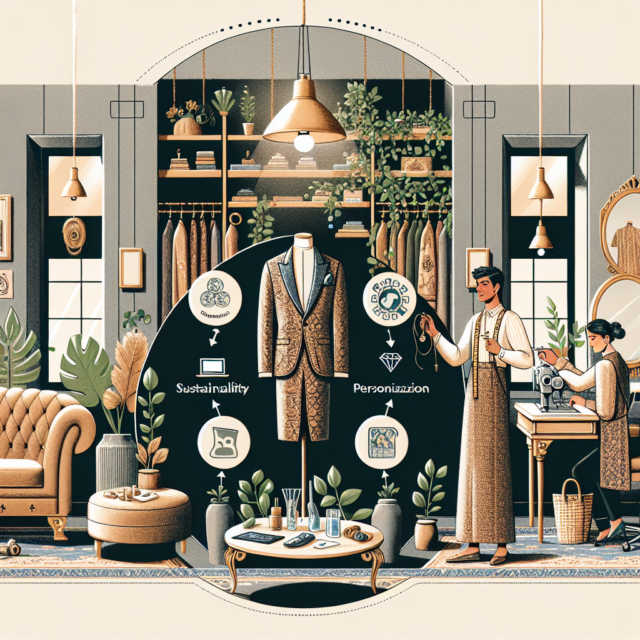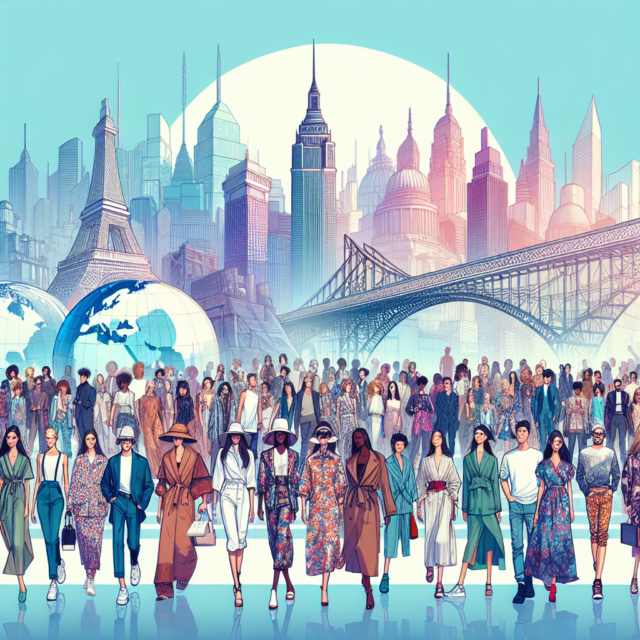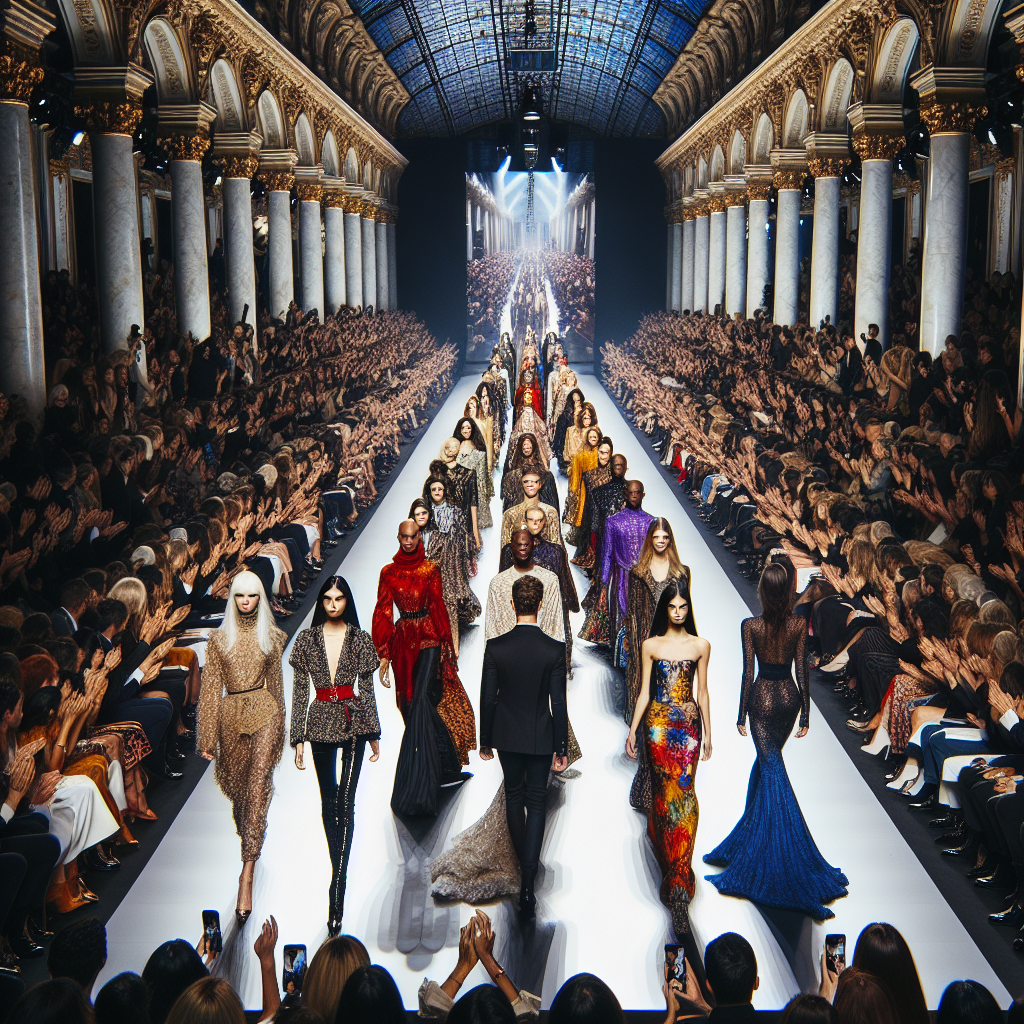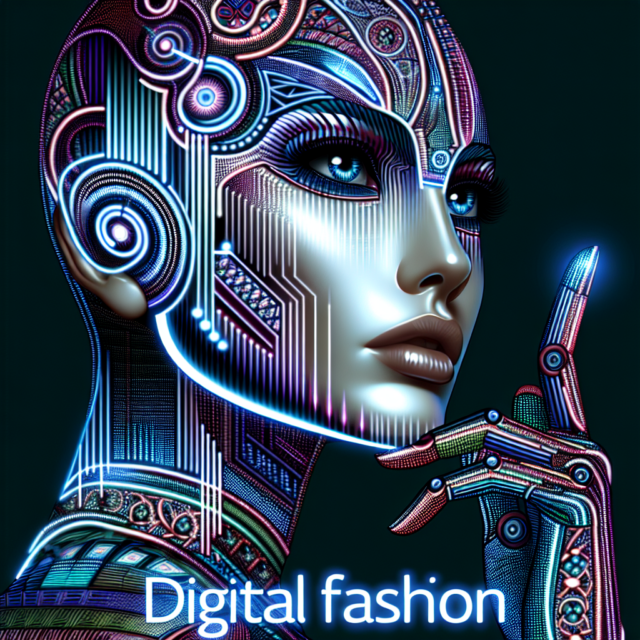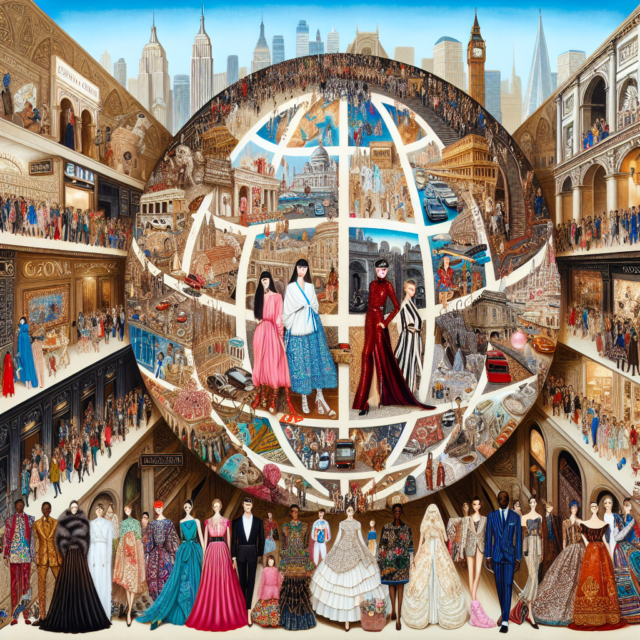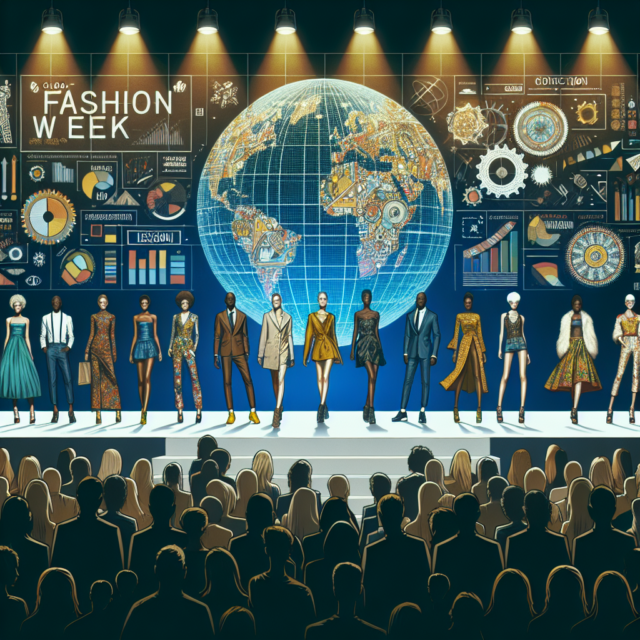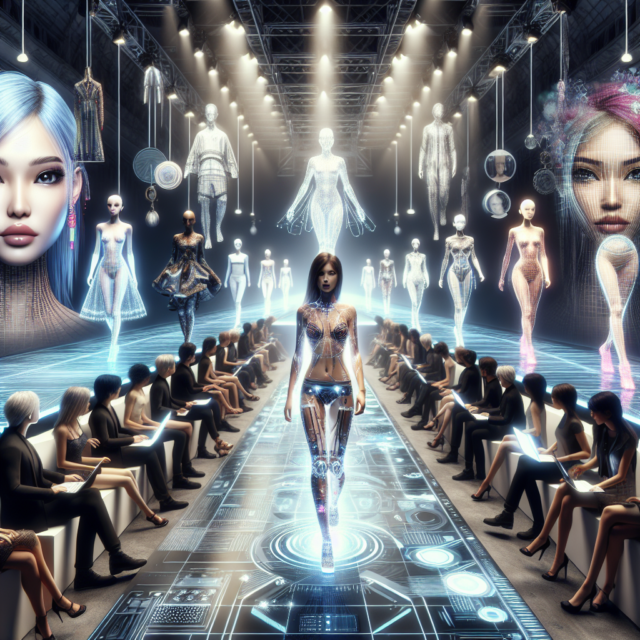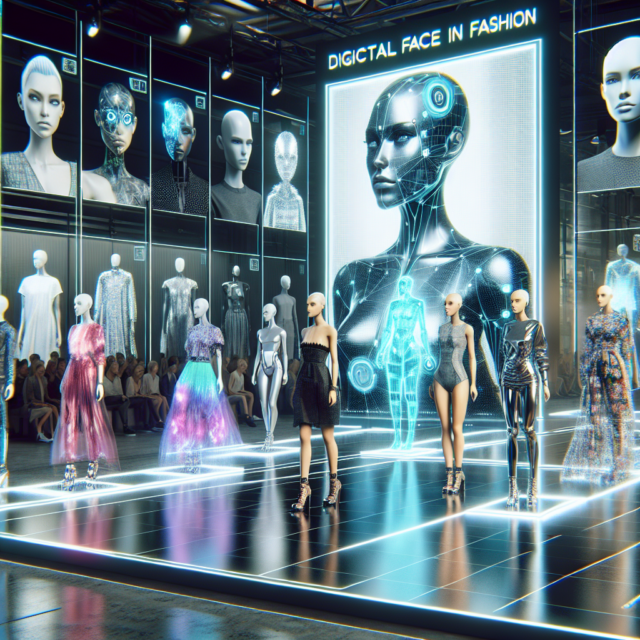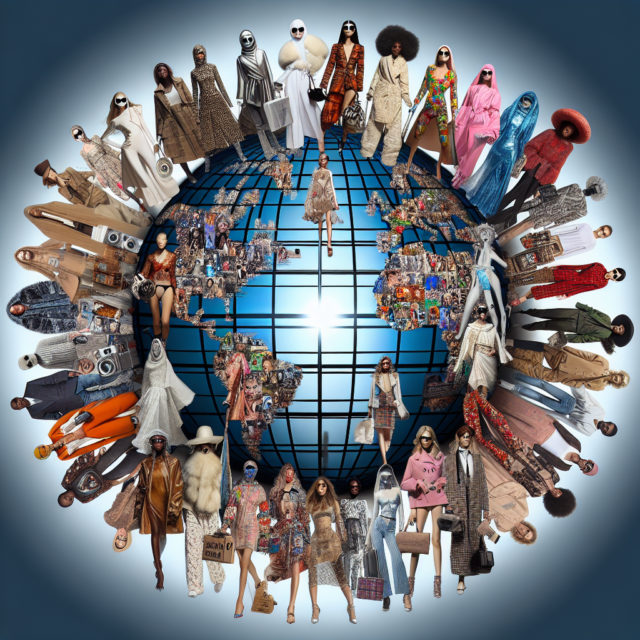Future Trends for Couture and Luxury Fashion Brands
The world of couture and luxury fashion is constantly evolving, adapting to societal changes and technological advancements. As we look to the future, several key trends are poised to reshape the industry. From sustainability and digital integration to personalization, these trends highlight a shift in consumer preferences and the industry’s response to these demands. In this article, we explore these future trends in detail, offering insights into how they will influence the luxury fashion landscape.
Embracing Sustainability in Luxury Fashion
Sustainability has become a pivotal focus for the luxury fashion industry as brands recognize the need to address environmental and ethical concerns. High-end fashion houses are increasingly adopting sustainable practices, from sourcing eco-friendly materials to implementing transparent supply chains. This shift not only meets consumer demand for responsible consumption but also protects brand reputation in an increasingly eco-conscious market.
One of the key strategies luxury brands are employing is the use of sustainable materials. Innovations in fabric technology have led to the development of biodegradable and recycled textiles, allowing designers to create exquisite pieces without compromising on environmental responsibility. Brands are also exploring alternative materials such as organic cotton, hemp, and even lab-grown leather, which offer similar aesthetics and quality as their traditional counterparts.
Another significant aspect of sustainability in luxury fashion is the focus on ethical production. Many brands are investing in fair labor practices and ensuring that workers involved in the production process are paid fairly and work under safe conditions. This commitment to ethical standards not only enhances brand credibility but also appeals to consumers who value social responsibility.
Transparency is also becoming a hallmark of sustainable luxury fashion. Brands are increasingly providing detailed information about their supply chains, allowing consumers to trace the journey of a product from raw material to finished garment. This openness fosters trust and loyalty among consumers who are eager to support brands that prioritize ethical and sustainable practices.
Circular fashion is another trend gaining momentum in the luxury sector. By promoting the reuse and recycling of garments, brands are encouraging consumers to embrace a more sustainable approach to fashion. Initiatives such as take-back programs, resale platforms, and upcycling collaborations are helping to extend the lifecycle of luxury products, reducing waste and maximizing resource efficiency.
Ultimately, embracing sustainability is not just a trend but a necessity for luxury fashion brands. As environmental concerns continue to grow, brands that prioritize sustainability will likely lead the industry, setting new standards for what it means to be a responsible and forward-thinking fashion house.
The Rise of Digital Fashion Experiences
The digital revolution is transforming the luxury fashion landscape, offering new opportunities for engagement and innovation. Digital fashion experiences are becoming increasingly popular, providing consumers with immersive and interactive ways to connect with their favorite brands. From virtual fashion shows to augmented reality (AR) shopping experiences, the digital realm is reshaping how luxury fashion is perceived and consumed.
Virtual fashion shows have emerged as a powerful tool for luxury brands to showcase their collections to a global audience. By leveraging digital platforms, brands can reach consumers who may not have the opportunity to attend physical events. These virtual shows often incorporate cutting-edge technology, such as 3D modeling and animation, to create visually stunning presentations that captivate viewers and generate buzz in the digital space.
Augmented reality is another technology that is revolutionizing the luxury fashion experience. AR allows consumers to virtually try on clothing and accessories, offering a personalized shopping experience from the comfort of their homes. This technology not only enhances convenience but also reduces the need for physical inventory, aligning with sustainability goals and reducing environmental impact.
The rise of digital fashion also extends to the concept of virtual garments. Digital fashion brands are creating clothing and accessories that exist solely in the digital realm, allowing consumers to purchase and wear these items in virtual environments. This trend is particularly popular in the gaming and social media spaces, where users can express their style through digital avatars.
Social media platforms are playing a crucial role in the digital fashion experience, serving as a conduit for brand storytelling and consumer engagement. Luxury brands are leveraging platforms like Instagram, TikTok, and Snapchat to showcase their collections, collaborate with influencers, and engage with a younger, tech-savvy audience. These platforms also facilitate direct interaction between brands and consumers, fostering a sense of community and loyalty.
E-commerce is evolving to offer more personalized and immersive shopping experiences. Luxury brands are investing in advanced technologies such as AI and machine learning to analyze consumer behavior and preferences, allowing them to tailor recommendations and create customized shopping experiences. This level of personalization enhances consumer satisfaction and drives brand loyalty in an increasingly competitive market.
As digital fashion experiences continue to evolve, luxury brands must remain at the forefront of technological innovation. By embracing digital tools and platforms, they can create memorable and engaging experiences that resonate with consumers and redefine the boundaries of luxury fashion.
Personalization and Customization in Couture
In the realm of couture, personalization and customization have become defining elements of luxury fashion. Consumers are increasingly seeking unique, tailor-made experiences that reflect their individuality and personal style. As a result, luxury brands are offering a range of customization options, from bespoke garments to personalized accessories, to meet this growing demand.
Bespoke tailoring is one of the most traditional forms of personalization in couture. Luxury fashion houses offer bespoke services that allow clients to design garments from scratch, selecting everything from the fabric and color to the cut and fit. This level of personalization ensures that each piece is a reflection of the client’s personal style and preferences, creating a one-of-a-kind garment that embodies true luxury.
In addition to bespoke services, many luxury brands are offering customization options for ready-to-wear collections. Consumers can personalize various aspects of a garment, such as monogramming, embroidery, or selecting unique colorways. This approach allows brands to offer a personalized touch while still maintaining the accessibility and convenience of ready-to-wear fashion.
Technology is playing a crucial role in advancing personalization in couture. Brands are leveraging digital tools to offer virtual customization experiences, allowing consumers to visualize and modify designs in real time. This technology not only enhances the shopping experience but also streamlines the production process, as custom orders can be processed more efficiently.
Personalized accessories are another area where luxury brands are focusing their efforts. From handbags and shoes to jewelry and watches, consumers can customize a wide range of products to suit their tastes. This trend is particularly popular among millennial and Gen Z consumers, who value individuality and are willing to invest in products that reflect their unique identity.
The rise of personalization and customization in couture is also driven by a desire for exclusivity. In a world where mass production is the norm, owning a personalized piece offers a sense of rarity and distinction. Luxury brands are capitalizing on this desire by offering limited edition and made-to-order items that cater to consumers’ desire for exclusivity.
As personalization and customization continue to shape the future of couture, luxury brands must find innovative ways to offer these experiences while maintaining the craftsmanship and quality that define the industry. By doing so, they can enhance consumer satisfaction, foster brand loyalty, and reinforce their position as leaders in the world of luxury fashion.
The future of couture and luxury fashion is being shaped by a confluence of sustainability, digital innovation, and personalization. These trends reflect the evolving preferences of consumers who seek ethical, immersive, and individualized experiences. As luxury brands navigate this dynamic landscape, they must continue to innovate and adapt to remain relevant and competitive. By embracing these future trends, the industry can not only meet the demands of today’s consumers but also set new standards for luxury fashion in the years to come.







